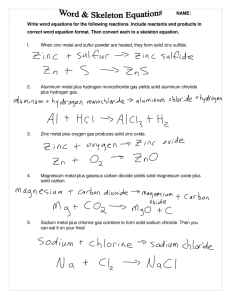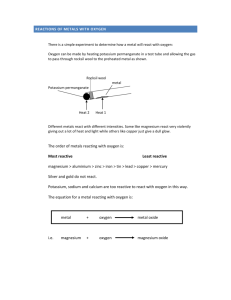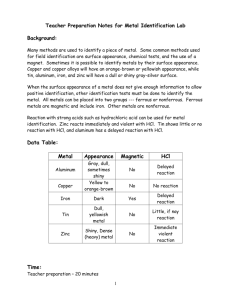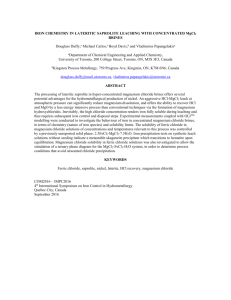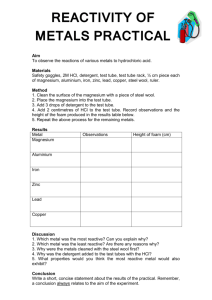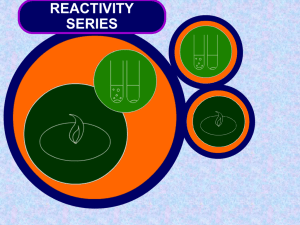Conclusion - globalstudies101
advertisement
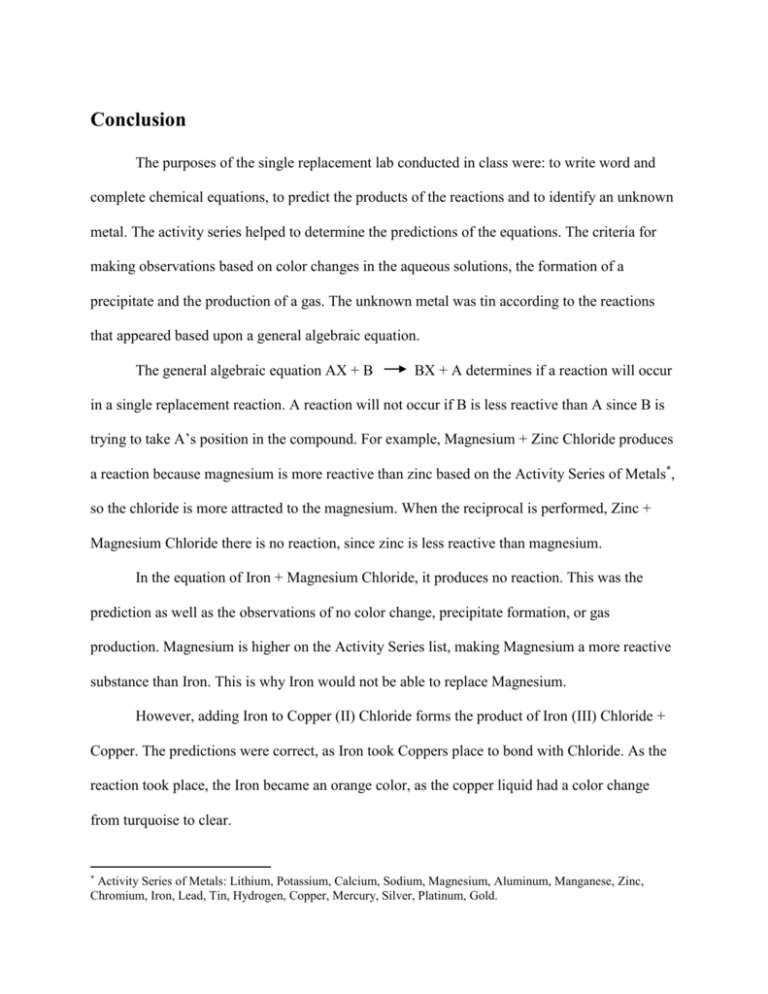
Conclusion The purposes of the single replacement lab conducted in class were: to write word and complete chemical equations, to predict the products of the reactions and to identify an unknown metal. The activity series helped to determine the predictions of the equations. The criteria for making observations based on color changes in the aqueous solutions, the formation of a precipitate and the production of a gas. The unknown metal was tin according to the reactions that appeared based upon a general algebraic equation. The general algebraic equation AX + B BX + A determines if a reaction will occur in a single replacement reaction. A reaction will not occur if B is less reactive than A since B is trying to take A’s position in the compound. For example, Magnesium + Zinc Chloride produces a reaction because magnesium is more reactive than zinc based on the Activity Series of Metals*, so the chloride is more attracted to the magnesium. When the reciprocal is performed, Zinc + Magnesium Chloride there is no reaction, since zinc is less reactive than magnesium. In the equation of Iron + Magnesium Chloride, it produces no reaction. This was the prediction as well as the observations of no color change, precipitate formation, or gas production. Magnesium is higher on the Activity Series list, making Magnesium a more reactive substance than Iron. This is why Iron would not be able to replace Magnesium. However, adding Iron to Copper (II) Chloride forms the product of Iron (III) Chloride + Copper. The predictions were correct, as Iron took Coppers place to bond with Chloride. As the reaction took place, the Iron became an orange color, as the copper liquid had a color change from turquoise to clear. * Activity Series of Metals: Lithium, Potassium, Calcium, Sodium, Magnesium, Aluminum, Manganese, Zinc, Chromium, Iron, Lead, Tin, Hydrogen, Copper, Mercury, Silver, Platinum, Gold. The Unknown metal is Tin. When experimented on, the unknown metal only slightly reacted with copper chloride and hydrochloric acid. This gave us the information to know the unknown metal was higher than hydrogen on the Activity Series of Metals. It was also observed being that the unknown metal did not react with Iron. Therefore, the unknown metal had to be between iron and hydrogen. It could have been either lead or tin. Although an experiment was performed mixing lead with the unknown metal, it could still be lead, because mixing lead with lead chloride would produce no reaction considering they are the same substance. The conclusion of the unknown metal became tin because lead is dark gray based on prior knowledge. The unknown metal was originally metallic silver. This brought on the final decision of the unknown metal being tin. In conclusion, no errors made with completing the purposes of the lab. The criteria shows how aqueous solutions react with one another, to produce a precipitate, form a gas, or have a distinctive color change. The Activity Series of Metals helped determine which single replacement reactions will produce a reaction and which ones will have no reaction. At last, there was an unknown metal to identify, which was tin, assuming our data was accurate.

